A simple guide to e-commerce conversion funnels (with examples)
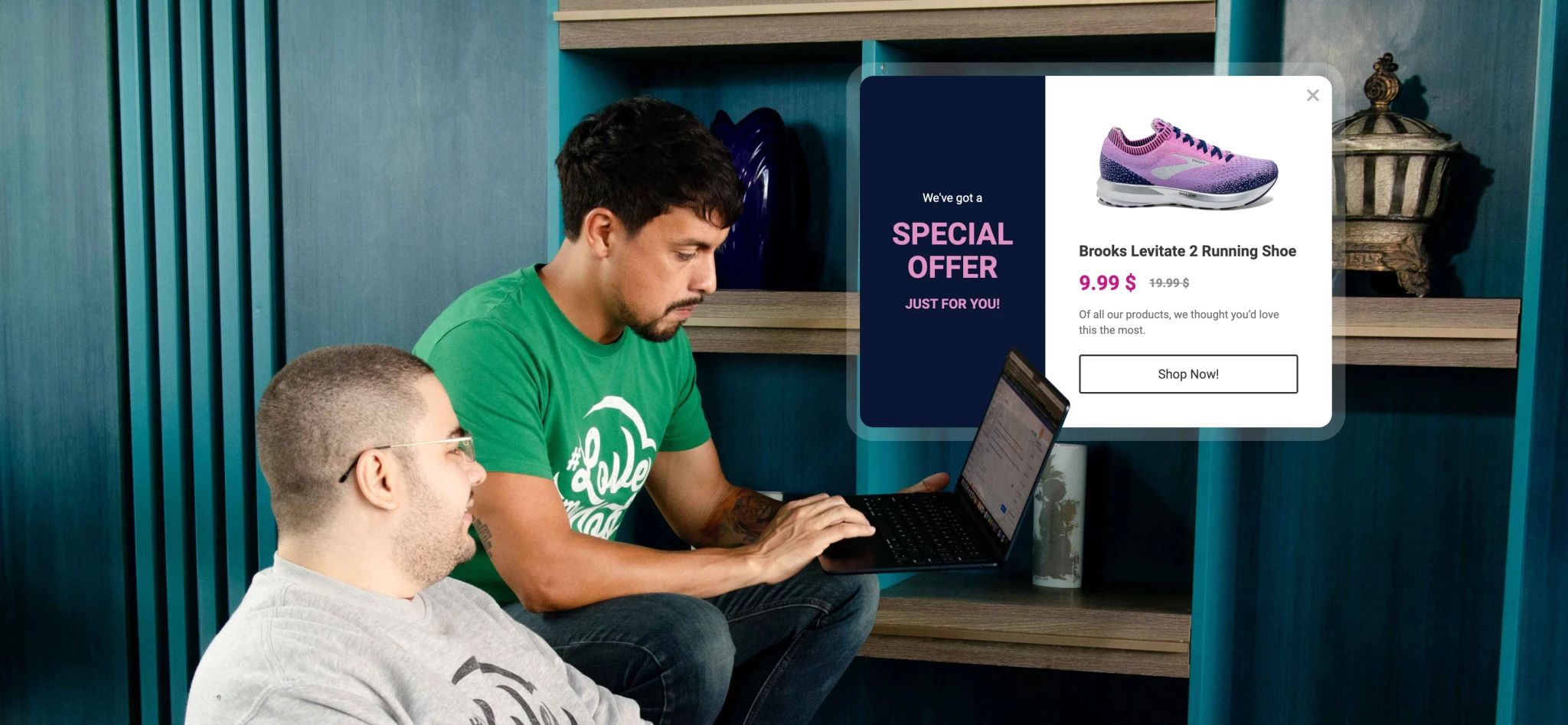 Pana and Jhonatan, customer support
Pana and Jhonatan, customer support
Understanding the e-commerce conversion funnel is key to generating sales. When you know how it works, you’ll put in place marketing strategies that smoothly guide people through the process of becoming customers.
Setting up a funnel doesn’t have to be complex: just choose strategies at each stage that fit your brand, product and customer base. Once in place, you’ll generate sales consistently, improve conversion, lower customer acquisition costs, and provide a better experience.
Excited to get started? Read on to discover the stages of the e-commerce funnel, learn strategies you can use, and see real-life examples to inspire your campaigns.
What is an e-commerce funnel?
An e-commerce funnel represents the stages people go through as they learn about your business and become customers. Each part of the funnel represents a different stage of the buying journey, starting with brand awareness and ending with your post-purchase strategy.
It’s called a funnel because the first stage typically has a large number of people. These get funneled down until you have a smaller number of loyal customers. The key to an effective funnel is ensuring that as many people make it through each stage as possible.
When you understand the e-commerce funnel you can implement marketing and sales processes that consider every part of it.
An e-commerce funnel is simply a marketing and sales funnel adapted to work for e-commerce stores. This funnel works best for consumer-focused brands with short sales cycles that sell and market their products online without the help of a sales team.
The 4 stages of the e-commerce funnel
E-commerce funnels typically have 4 stages: Awareness, consideration, conversion, and loyalty. These stages each represent a part of the buyer’s journey. Your marketing and sales strategy must contain tactics targeting each part of the funnel.
Here’s a quick overview of what happens at each stage:
Awareness: When potential customers discover your brand
Consideration: When potential customers decide to buy your product
Conversion: The process of buying the product
loyalty: What happens after the sale
The exact steps you use in each part of the e-commerce funnel will depend on your product, audience, budget, product price and the strengths of your team.
High-price items with a specialized audience will often focus on consideration. Think about what happens when you buy a new laptop or a T.V. You’ll spend time researching the purchase so you get the one that best suits your needs.
Low-price items may minimize the consideration stage and go straight from awareness to conversion. You might just see a social ad, click on to the landing page, and buy the product if you like it.
The exact stages in an e-commerce funnel, or any sales or marketing funnel, can differ depending on who you ask. Some people add an interest stage before consideration, while others end the funnel at the conversion stage. We use the 4 stage model because we think it works well for most e-commerce sellers.
Some marketing activities will fall under multiple stages. For example, landing pages can focus on both consideration and conversion while promotional newsletters can be both consideration and loyalty depending on the email recipient.
Here’s a deeper look at each of the stages in the funnel and some tactics you can use in each one.
Awareness
The awareness stage of the e-commerce funnel is when people discover your brand. The goal of the strategies in this stage is simple: turn people who don’t know about your brand into people who do.
The awareness stage is arguably the most important part to get right. You need to be able to generate awareness among a relevant audience at a cost that allows your product to be profitable.
When choosing a strategy, go for one that gets your product in front of your chosen audience. The more precise you can be with your targeting, the less money you’ll waste on promoting your brand to people who will never be interested.
Many e-commerce brands start with paid social ads due to the granular targeting offered by these platforms, the detailed reporting they offer, and the control you get over your campaigns.
Build your organic following on social media platforms
Scale awareness with social, display and search advertising
Partner with influencers who share a target audience with your brand
Set up affiliate marketing and referral programs
Use Search Engine Optimization (SEO) strategies to show up when people search for your product
Pay for ads on traditional media like TV, radio, and billboards
Pay for ads on digital media like podcasts, newsletters and YouTube videos
Consideration
The consideration stage is when someone knows about your brand and is thinking about making a purchase. The goal of this stage is to convince this person to buy.
The first step is deciding whether the product is something they need, while the second step is deciding whether your brand is the right one for them.
If your product is part of an established category, like t-shirts or soap, you’ll need to spend less time on the former question and more time letting people know why they should choose your brand.
Newer categories need to focus on showing people why they need your product. Do this by highlighting how it helps people achieve their goals or avoid common pain points.
To create an effective consideration stage, you must know how people decide to buy the type of product you are selling. You can then provide the relevant information in the right places to help them choose.
Marketing for the consideration stage can take place on both your own channels and on third-party channels.
Owned channels:
Create product and landing pages filled with benefits
Generate and promote social proof like testimonials and reviews
Convert website visitors into email subscribers with pop-ups and forms
Send email newsletters to promote your products
Use discounts, offers and bundles to make your deal more attractive
Generate urgency with limited-time offers
Third-party channels:
Retarget website visitors with social or display ads
Create social media posts that highlight your product
Collect reviews on third-party platforms
Conversion
The conversion stage is everything that happens from the moment someone decides to buy to the moment they hit the purchase button.
The main goal at this stage is streamlining the buying process so there are as few obstacles as possible. This means everything from ensuring that no technical bugs occur during the buying process to giving people their expected payments and shipping options.
Beyond creating a smooth buying process, you can also take steps to both increase the likelihood of conversion and maximize the amount paying customers spend when they checkout.
Set up abandoned cart emails to bring people who started but never completed the checkout process back to the page
Offer customers the ability to buy now and pay later or split up their payments
Add urgency via alerts that show when remaining stock is low
Add a chat widget so people can contact support if needed
Include social proof via star ratings or reviews
Upsell and cross-sell customers to more expensive products
Cross-sell relevant products and services
Loyalty
The loyalty stage includes all the activities you do post-sales. Typically this stage has 2 goals, the first is encouraging buyers to buy from you again, and the second is to get them to share your online store with others.
The key to building loyalty is collecting a way to repeatedly contact your customers during the buying process. This will typically happen via email marketing, but it could also be SMS, social media or messaging channels.
Once you have permission to contact someone, you can create post-purchase sequences that do everything from encourage purchases to ask for reviews or referrals.
Loyalty is important because repeat buys are often the most profitable. You don’t have to pay to reach this audience and retention-focused channels like email marketing and organic social are very cheap to run.
Additionally, if you can use your existing customers to promote your brand via referrals, you can bring your overall cost of customer acquisition down.
Ensure you fulfill the purchase successfully
Create a post-purchase email sequence to improve the buyer experience
Promote products via your email newsletter
Ask existing customers to review or refer your product
Promote your products on your social media channels
Send SMS or chat platform messages
Add promotional content or discounts to your packaging so people can make repeat buys
Create loyalty programs that encourage repeat buys
E-commerce sales funnel examples
Here are 2 examples of e-commerce sales funnels. The first, for Electrolux washing machines, builds brand awareness via display ads while the second, for HMNV supplements, starts with an influencer marketing campaign.
Use these examples as inspiration for your own e-commerce conversion funnels.
Example 1: Electrolux washing machine
Awareness
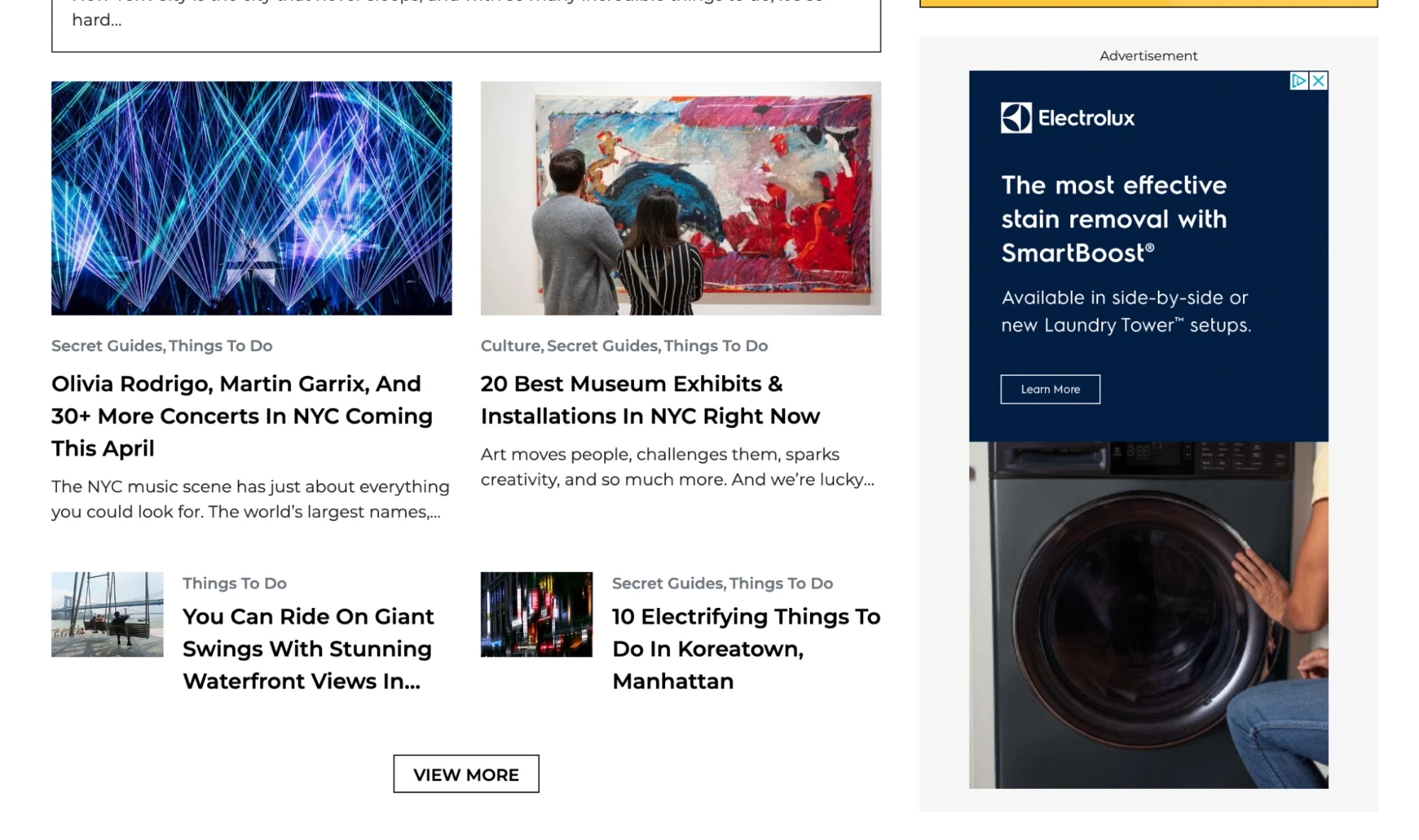
Electrolux brings awareness to its range of washing machines with display ads. This allows the brand to reach a large number of people. This ad also starts the interest stage by highlighting what makes the product great.
Consideration
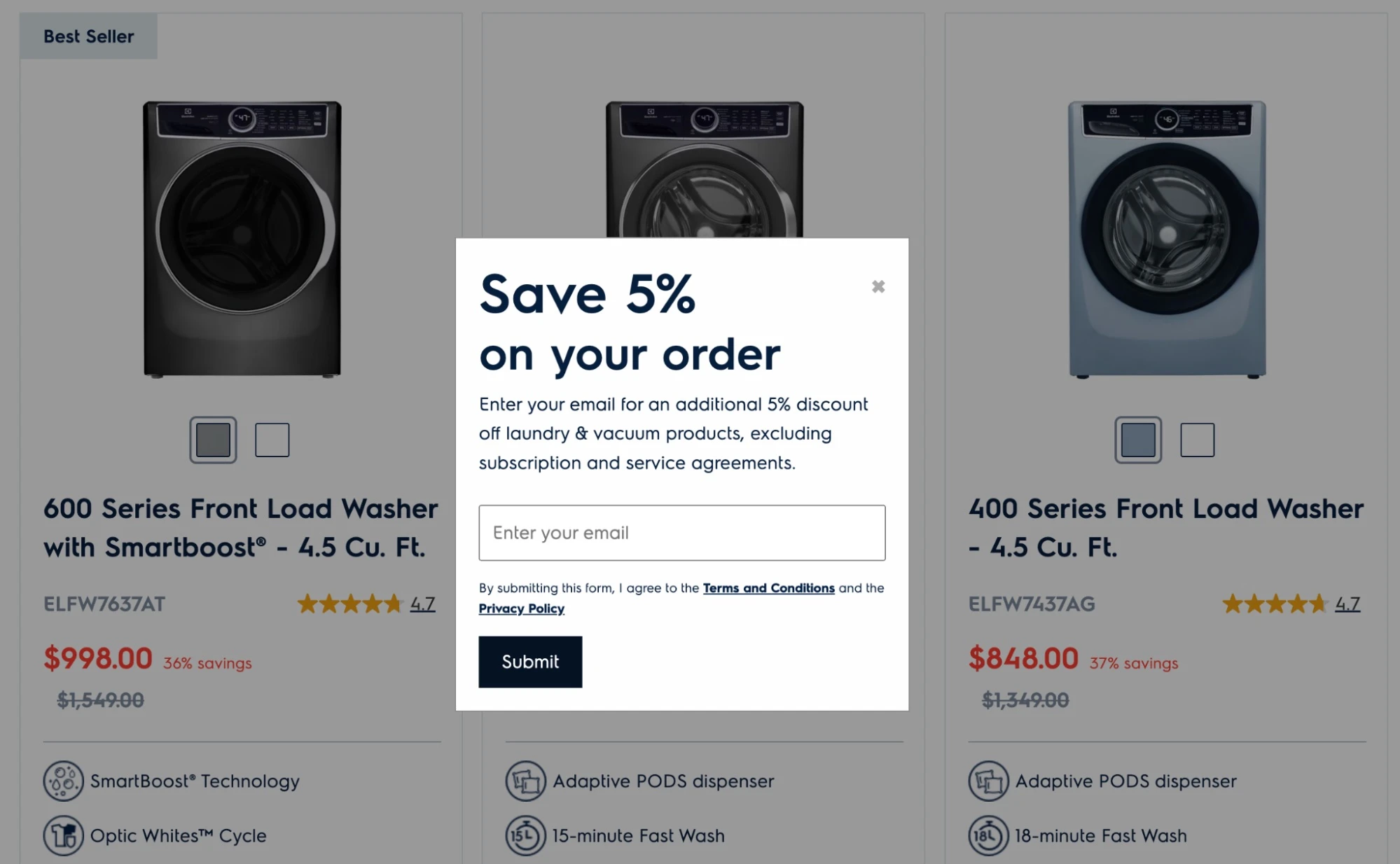
Once you click on the website, the descriptions are full of information about the product's benefits. There’s also a pop-up that offers a 15% discount to anyone who signs up for the mailing list.
Conversion
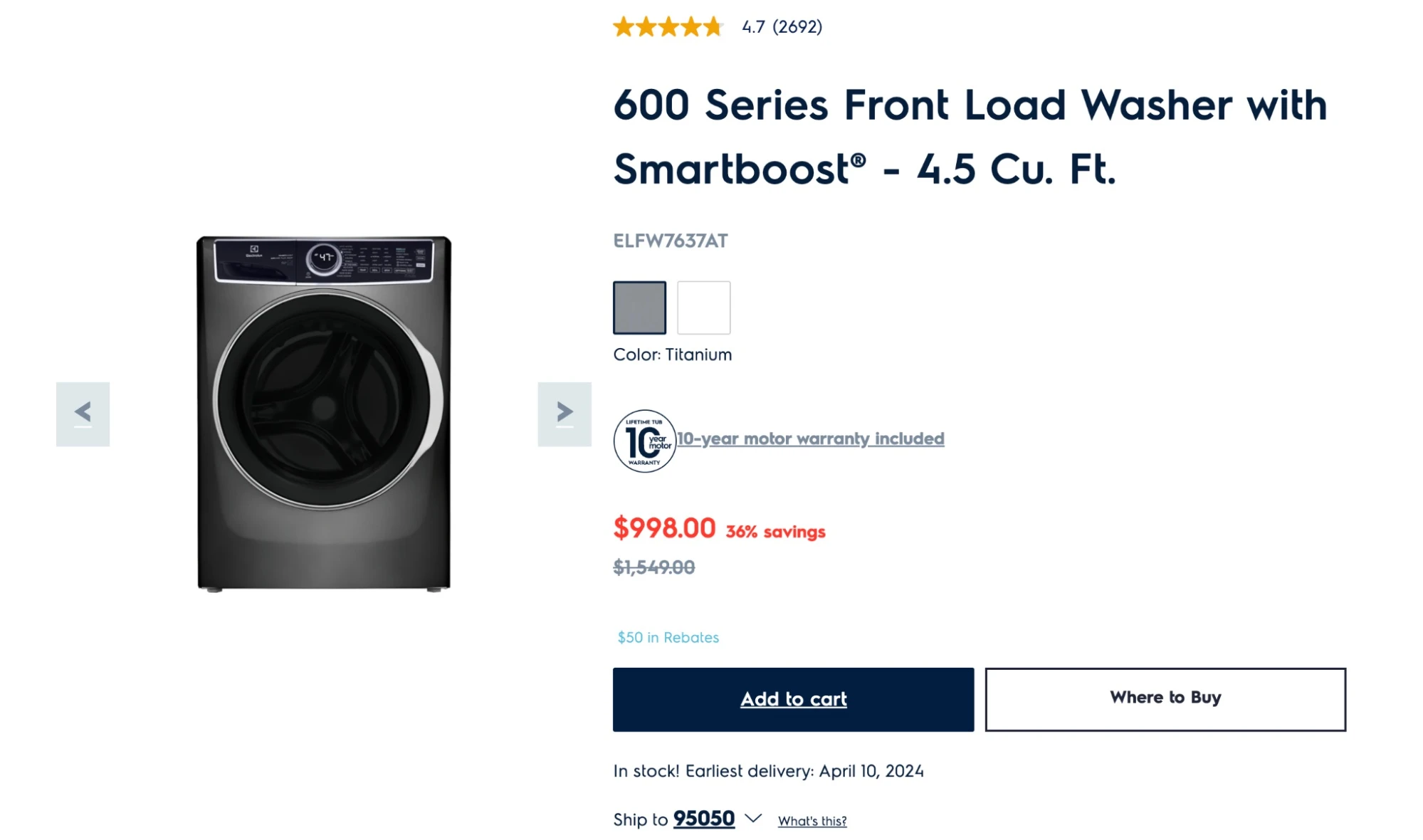
Electrolux’s conversion process is particularly impressive. The product page includes a discount, warranty info, stock warning, and star rating. Then the purchase page contains several useful upsells and cross-sells to increase the average order value.
Loyalty
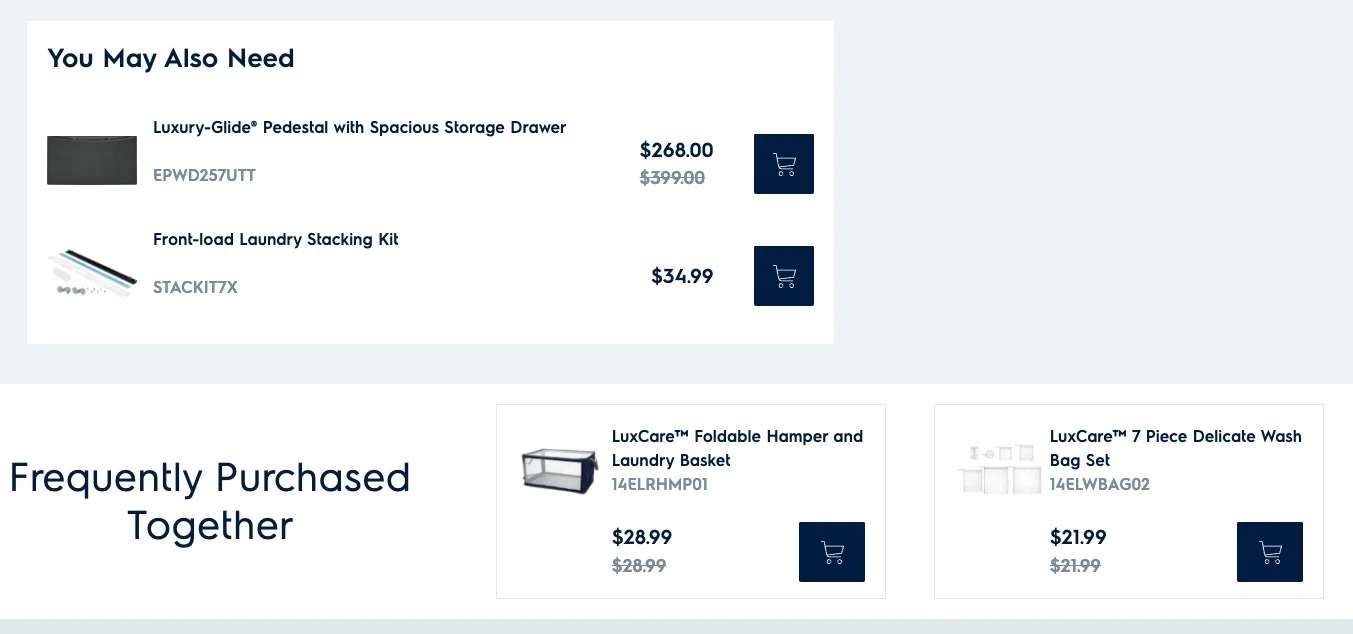
Not many people buy multiple washing machines, but Electrolux can boost customer retention by promoting its other home products and add-on services via an email newsletter. It can also ask for ratings and reviews to further increase the impact of its product pages.
Example 2: HVMN supplements
Awareness
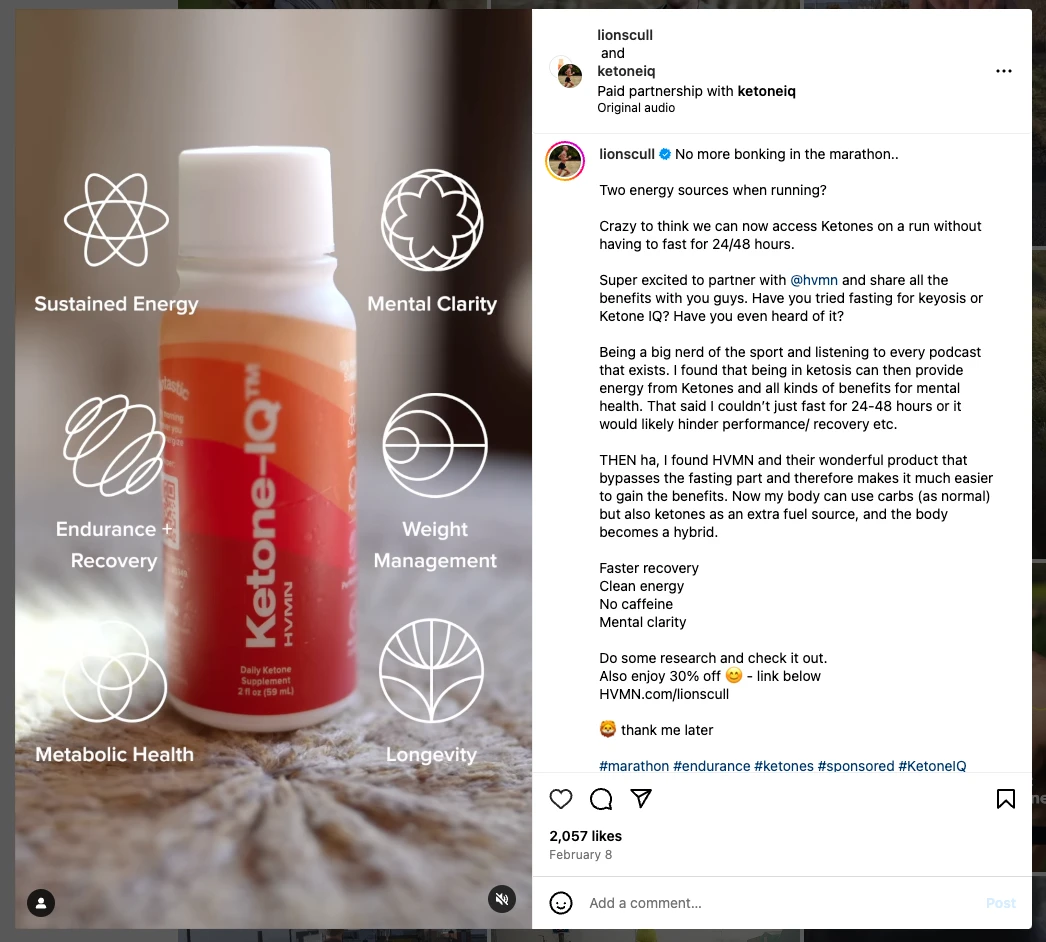
HVMN partners with a popular running influencer to bring awareness to its supplements. This lets the brand get in front of a very targeted audience of people interested in running.
Consideration
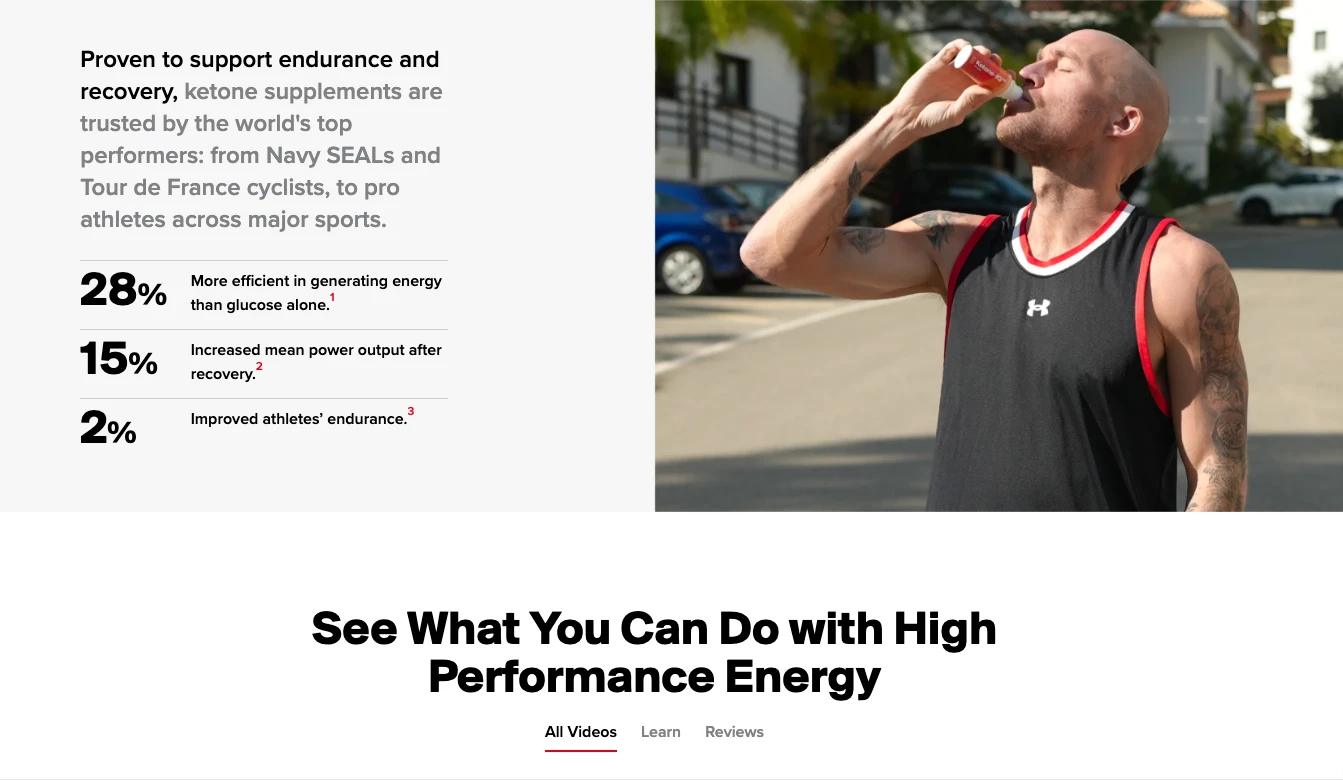
The brand generates interest in the initial sponsored content by highlighting the product’s benefits. It builds on this with a landing page that contains testimonials from the influencer, more benefits, and reviews.
Conversion
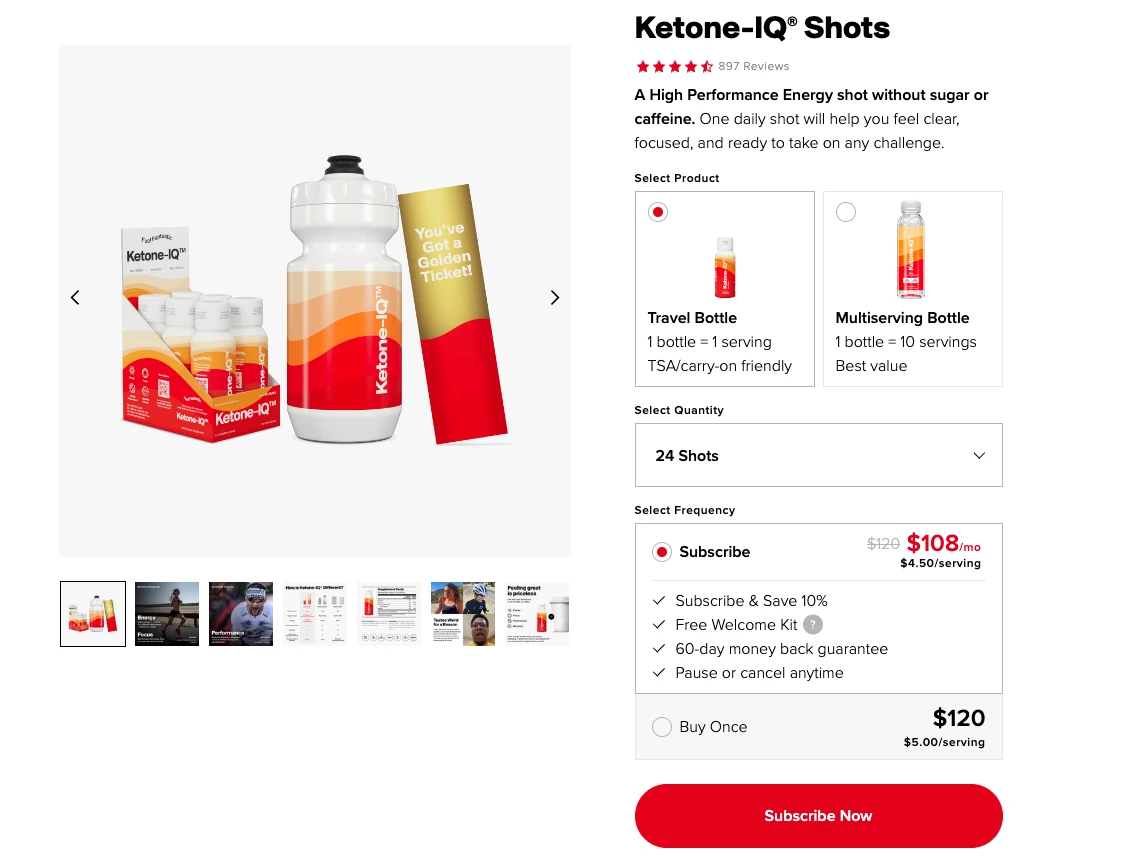
HVMN optimizes conversion with product images, user review star ratings, a bonus welcome kit, a promise that users can cancel at any time, and plenty of easy payment options.
Loyalty
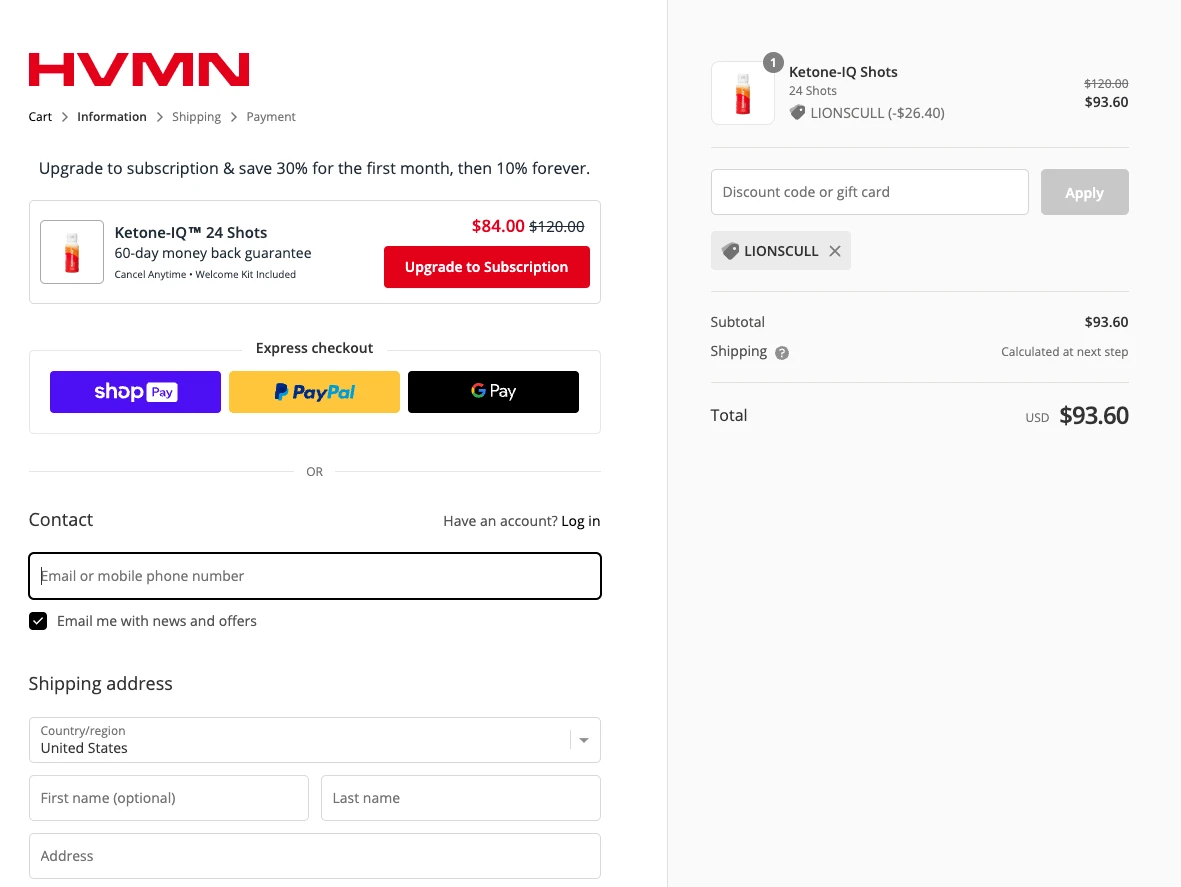
HVMN starts the loyalty-building process pre-sale by letting buyers upgrade to a subscription to save. After the initial sale, they could boost loyalty by sending promotional emails or including discounts for longer-term purchases.
Measuring and optimizing your e-commerce sales funnel
It's unavoidable that people will drop off at each stage of the funnel. But, you can still optimize each step to maximize the number of people who move from one stage to the next.
Here are some ways you can optimize your e-commerce sales funnel.
Analysis
Optimizing your funnel starts with understanding how effective each stage currently is. There are 2 models you can use to analyze the impact of your funnel: attribution-based and campaign-based models.
Attribution-based models assign part of the value of each sale to each part of the e-commerce funnel the buyer interacted with. This is complicated to set up as you need to both accurately define the value of each step and track customer journeys across multiple platforms.
A better option for many e-commerce businesses is to measure the impact of each campaign that makes up your funnel. This is typically easy to do using data provided by each platform.
Here are examples of the data you can measure at each stage of the campaign.
Awareness
Measure the effectiveness of the awareness stage by tracking the number of people who saw your ads or content and then clicked through to your e-commerce site.
Consider tracking the below metrics:
Reach of your social posts or influencer partnerships
Number of people who clicked on ads and cost per click or impression
Performance of website pages on search engines
Number of referrals or affiliate recommendations made in a time period
Consideration
Metrics tracked in the consideration stage will be around the number of people who saw, clicked on, or interacted with your consideration-focused content and then started the buying process.
Number of email pop-ups or form conversions
Number of clicks on email campaign promotions
Clicks from your consideration-focused website pages to your conversion-focused pages
Clicks on retargeting ads
Conversion
At the conversion stage, track how your conversion-focused pages lead to sales. Your landing page or website-building platform may provide this data. Or you can set up conversions in your website analytics platform.
You can also get further data by using a heat mapping tool like HotJar to see exactly which elements people click on. If you built your landing page with MailerLite, then our landing page builder offers similar functionality.
Loyalty
Track how your loyalty campaigns result in repeat purchases or recommendations. Useful metrics to track include:
Orders generated from email campaigns
Number of successful referrals
Sales generated by coupon codes sent to buyers
Loyalty program performance
Number of reviews generated
A/B testing
Once you know how each part of the funnel currently performs, you can use A/B testing to improve them. A/B testing allows you to test multiple versions of an element in your marketing strategy to see which one is most effective.
Consider testing:
Forms and pop-ups: See which offers and content lead to email signups
Landing page content: Discover which content and CTAs lead people to click to checkout
Offers: Find out the impact of factors like discounts or free shipping
Email performance: Discover which subject lines and email content get opened and clicked on
Ad performance: Discover which ads lead to more clicks or a higher return on ad spend
MailerLite lets you A/B test your landing pages, forms and emails, while both Meta Ads and Google Ads have built-in testing features. How you test your checkout pages will depend on the e-commerce platform you use, but there are plenty of tools that will help.
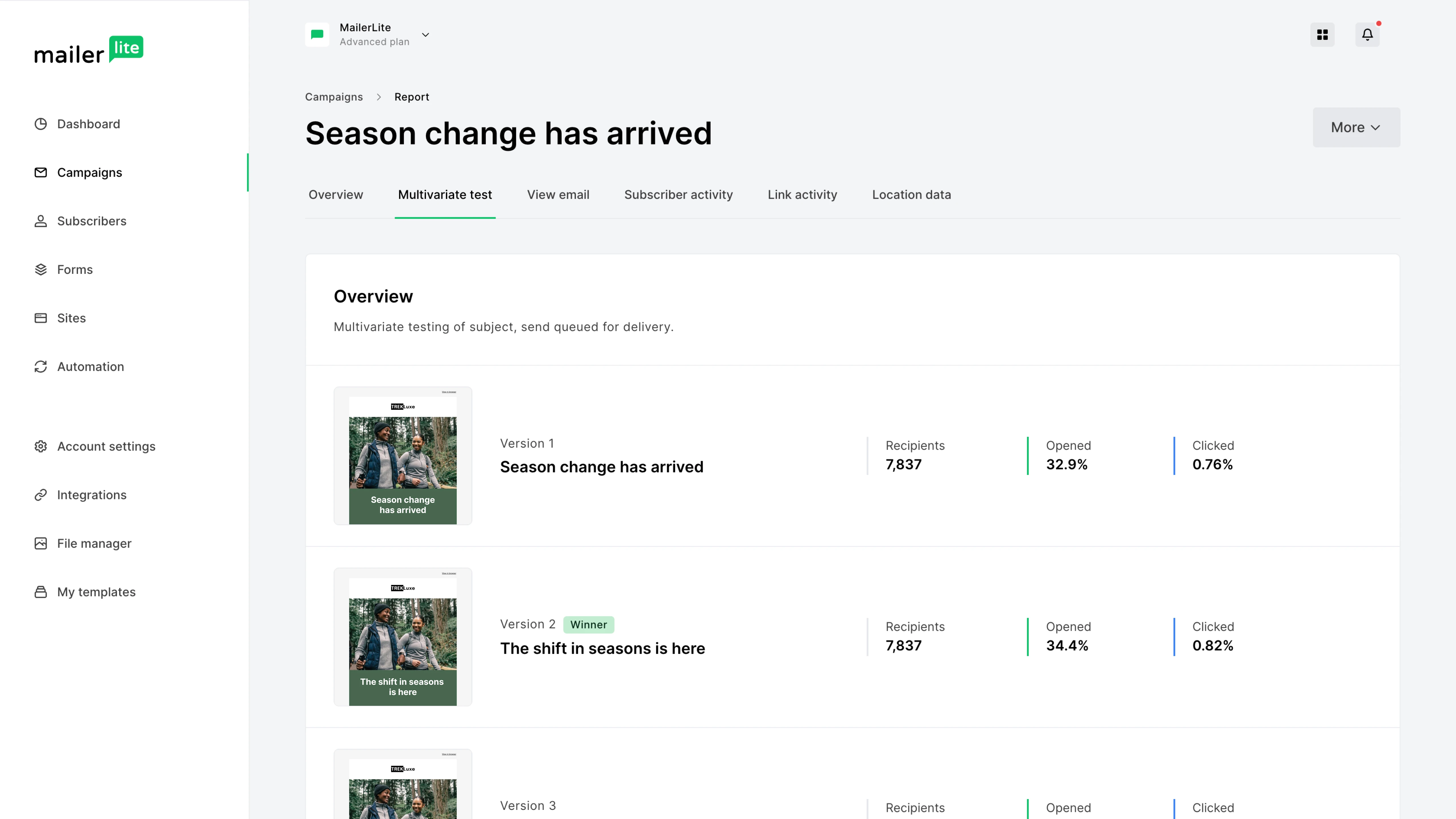
Track outcomes
While you can track each stage of your funnel, it can also be useful to track the outcome of your funnel as a whole.
Metrics that you can track include:
Number of new customers
Number of repeat customers
Campaign revenue
Number of referred customers
Lifetime customer value
Shopping cart value
The cost of acquiring a customer
Tracking these metrics won’t tell you the impact of each tactic you use, but it can tell you whether your overall strategy is generating the results you need to be successful.
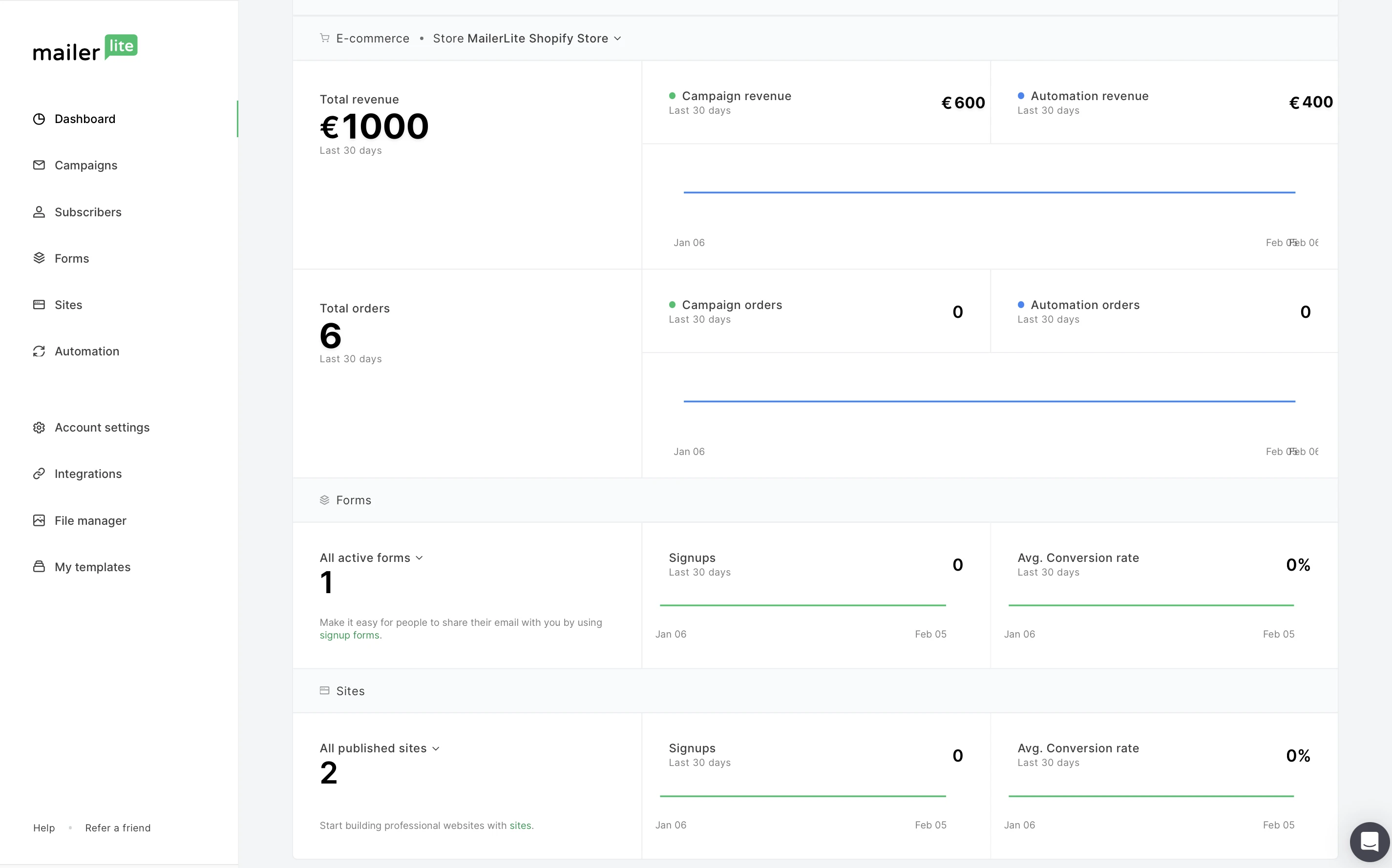
A simple exercise to set up your e-commerce funnel
The idea behind the e-commerce funnel is quite easy to grasp. You need to tell as many people as possible about your product, get them interested in it, convince some of them that it’s worth buying, and then keep loyal customers coming back for more.
The hard part is actually putting in place the strategies to make it work. But with the tips and examples in this article, you should have all you need.
To start, choose 1 or 2 of the strategies mentioned in each section and use these as your basic funnel. You can then keep and optimize what works or choose different strategies if you aren’t seeing the results you need.
Build your e-commerce funnel with MailerLite
Get all the marketing tools you need to create an effective e-commerce email marketing funnel. Build landing pages, pop-ups, email campaigns and track results with built-in analytics. Get set up in minutes with prebuilt integrations. Start today with a 14-day free trial of premium features.
